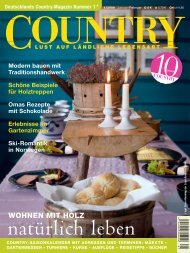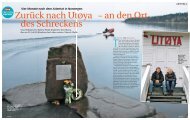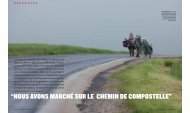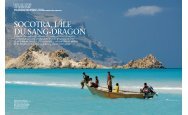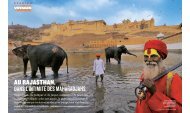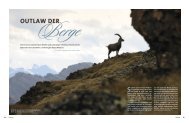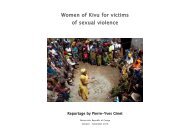here - laif agentur für photos & reportagen
here - laif agentur für photos & reportagen
here - laif agentur für photos & reportagen
You also want an ePaper? Increase the reach of your titles
YUMPU automatically turns print PDFs into web optimized ePapers that Google loves.
INTRO:<br />
Photography projects require money. Many photographers produce work at their own financial cost. T<strong>here</strong> are,<br />
however, plenty of funding sources available from different organizations. These organizations are ready to support<br />
image makers providing funding for research, creation, production, travel and living expenses.<br />
T<strong>here</strong> is a definitive technique to grant writing, learn this and strengthen your chances of reaching the top of the<br />
pile.<br />
/ INTERVIEW WITH DONALD WEBER:<br />
“When I first started applying for alternate forms of funding, I wanted to beef up my CV, so I was looking for awards<br />
that offered a wide range of benefits – a winner’s exhibition or a book or catalogue, perhaps a little cash, or just<br />
the title of “first prize” – all very important when you’re applying for the larger grants or to Government-funded arts<br />
councils. Crafting a CV is vital. You need to give your work validation and credibility.<br />
In the beginning it took a long time to apply for each grant or award but, now that I’ve figured out the methods and<br />
my work has been edited, it’s quicker. I always have about four ideas in my head and writing for grants is good a<br />
way to get those ideas fleshed out in detail and on paper. I write a proposal for myself first, just to get it out, then<br />
fine-tune it to the specific application – t<strong>here</strong> may be certain themes or passages I re-use, but each application<br />
is tailored. It’s not hard to do if you’ve got a strong, well-considered basic idea and, now that I’ve got a few years<br />
behind me as a photographer, I’ve figured out what I want to say. I like to go by instinct, and try not to fuss too<br />
much about it. You’re not going to win everything, so you just have to be true and honest. I’ve learned to enjoy it,<br />
though early on it was a struggle.<br />
Each project is different, but I like to stress my career arc: the things I’m interested in, perhaps why this work should<br />
be done and be done only by me, and stressing a sense of urgency. I am a more literary photographer then factual,<br />
so I try to combine my proposals with anecdotes and personal experiences, perhaps including people I’ve met on<br />
my travels, passages from books I’ve read, or quotes from historical figures or people who live w<strong>here</strong> I intend to<br />
shoot. Rarely do I use third-person quotes, such as “The New York Times says...”, as I find it takes the personal out<br />
of the proposal.<br />
I think my Guggenheim Fellowship proposal was successful because it was straight and to the point, but was also<br />
lyrical and had a sense that this was the only story I could tell, or wanted to tell. That personal touch made the pro-<br />
ject feel even more valued. I sat down and wrote it one night in a fit of fury, something I am prone to do. Basically, it<br />
was an email to a friend who is a writer, and he replied right away saying, “T<strong>here</strong>’s your proposal.” That’s essentially<br />
what I handed in, an email with cleaned-up spelling and grammar, but the immediacy, the rage, the knowledge<br />
and the heart all came out. I couldn’t type fast enough to get everything out on the page. It’s probably one of my




